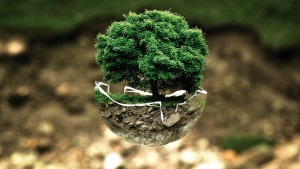Series: Sustainability and You
Plastic Water Bottles and the Great Pacific Garbage Patch
by Cesar Ponce
The fall semester at John Jay was quite unique for me. For my Sustainability 280 class, I was assigned to make a behavior change that would promote a sustainable lifestyle. The goal of this assignment was to highlight how some of our everyday behaviors may have unintended consequences on our environment and thus require modification. I noticed I had a habit of drinking bottled water and this was the behavior I decided to change for this assignment.
So why was it important for me to change this behavior? The consumption of bottled water pollutes our oceans, hurts marine life, and releases harmful chemicals into the atmosphere and soil once they are disposed of in landfills. Did you know that an area of the Pacific Ocean is filled with a high concentration of plastic garbage? This area is known as the Great Pacific Garbage Patch. The Great Pacific Garbage Patch is the result of too much plastic waste spilling over from landfills into the ocean. It is located between the waters of the west coast of North America and Japan (Turgeon, 2010). This is why I made it my goal to give up drinking bottled water.
Adapting to change can be difficult at first. There were a few times that I failed to keep my commitment. Nobody is perfect, but as time progressed, this new behavior became second nature to me. In total, I prevented 22 bottles of water from reaching a landfill. Could you imagine if 100 people made this commitment as well? That would be 2,200 bottles out of circulation. What if 1,000 people joined in? That would be about 22,000 bottles out of circulation! What this assignment taught me was that sustainability begins with ourselves. I am not here to judge. We all have our flaws and play a part in the environmental issues we face today. One way to address these issues is to embrace personal change. The smallest step in the right direction can end up helping to change the world. Tip toe if you must, but take that step and see where it takes you.
For more information on the Great Pacific Garbage Patch, please click the link below:
http://education.nationalgeographic.org/encyclopedia/great-pacific-garbage-patch
